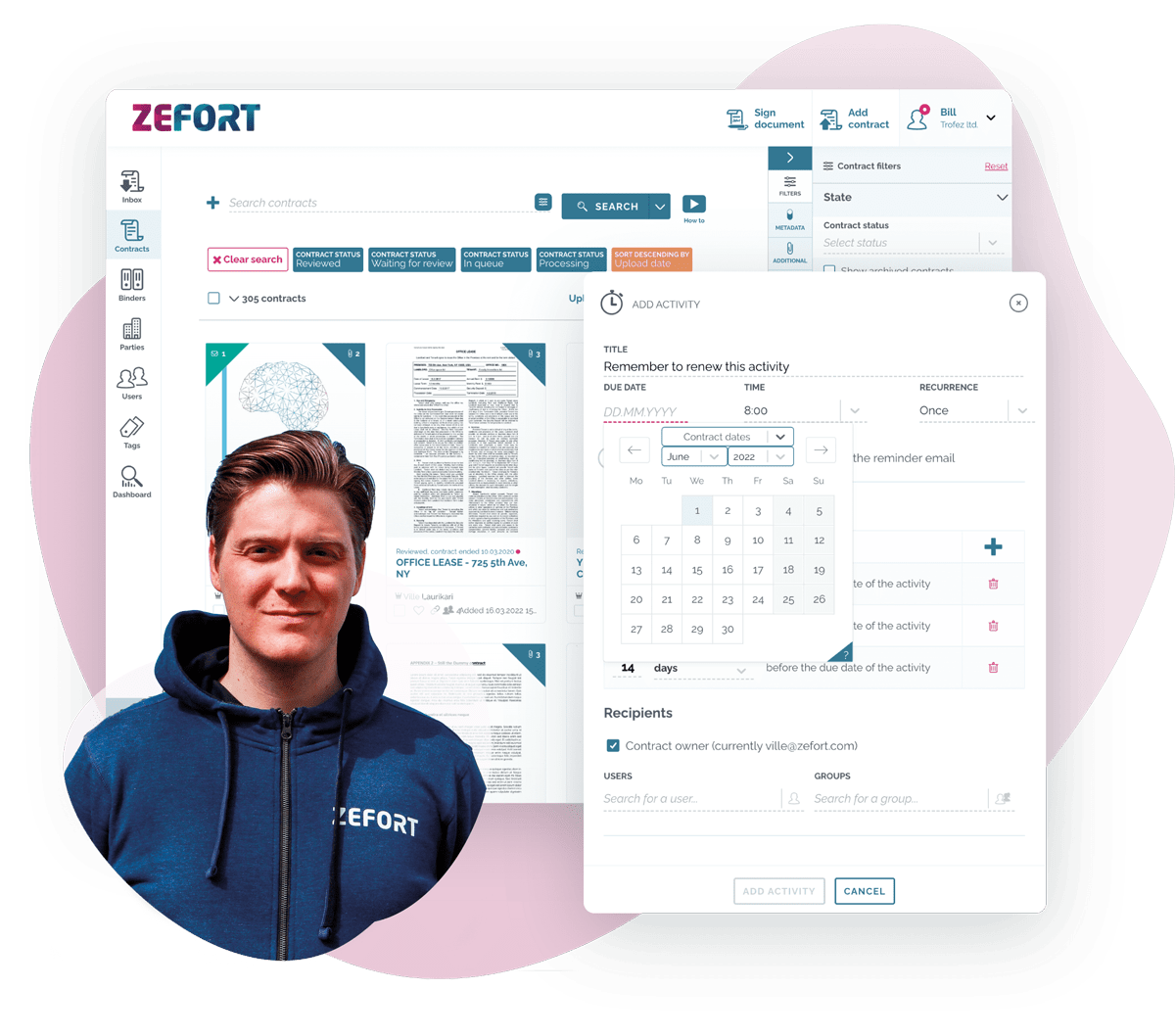Many companies are actively looking for ways to improve their contract management processes. Hot topics here include contract automation tools, legal design, electronic signatures and utilizing Artificial Intelligence (AI).
After completing a lot of AI projects that deal with large sets of contract data and extracting detailed legal provisions from high volumes of contracts, we have noted one essential factor – the way how companies use contract templates.
Company templates give more control
The fact is that the more contracting you do with your company’s own contract templates, the more control you get over your contracts.
In a larger organization, you can easily end up with 3,000 contracts, including some 50,000 pages of contract data in total. This amount of data is simply too much for any human to process meaningfully.
Now, let’s consider two different scenarios.
Company A succeeds in using their own contract templates for both selling and buying. Company B aims for the same but fails and ends up using a larger variety of contract templates.
When you apply contract clustering with AI tools for Company A case, you can suddenly group the thousands of contracts into just 20-50 groups. Effectively, you have reduced the incomprehensible mass of 50,000 pages to a manageable number of contract groups. Now you can start addressing more detailed questions.
Sure, the same clustering method can be done for the Company B case, although it takes more time fine-tuning the model and the results are a bit messier.
But now we come to the interesting part. Let’s say you need to fine-tune some area of the contracting process, such as GDPR.
In Company A case, we can easily provide excellent visibility in the contract group up to contracting party level. Company A probably has easy recipes for addressing the new requirements as their contract templates are already well known.
Company B, in turn, must spend a relatively enormous amount of working hours to reach to the same level of control.
Contract templates as a metric
One of the contracting process key performance metrics should be the account of contracts done with known templates.
It tells the organization how much control you have over your contracts. Changes in the metric also reveals issues in implementation – is something improving or getting worse.
Legal design and machine readability
There is the whole area of contracting drafting with intriguing modern IT tools and service partners available to be able to streamline your templates – there’s no need to address that topic further.
But there is again strong synergy between applying machine learning and AI and streamlining contract templates.
Legal design looks to improve contracts so that the various stakeholders are better able to digest the information in the contracts. There is far too long history of preparing the contracts only for the courts in case the worst risks realize.
Just like we are pursuing better legal design, we should make contracts more machine readable. These two goals complement each other.
In our experience there are some simple yet extremely powerful features that should be considered so that the contracts serve machine learning purposes better.
If you would like to discuss contract templates’ role in streamlining contracting processes or would like to discuss AI possibilities on your company’s contract data, get in touch with our project lead, Juhani Heikkilä at juhani.heikkila@zefort.com.






